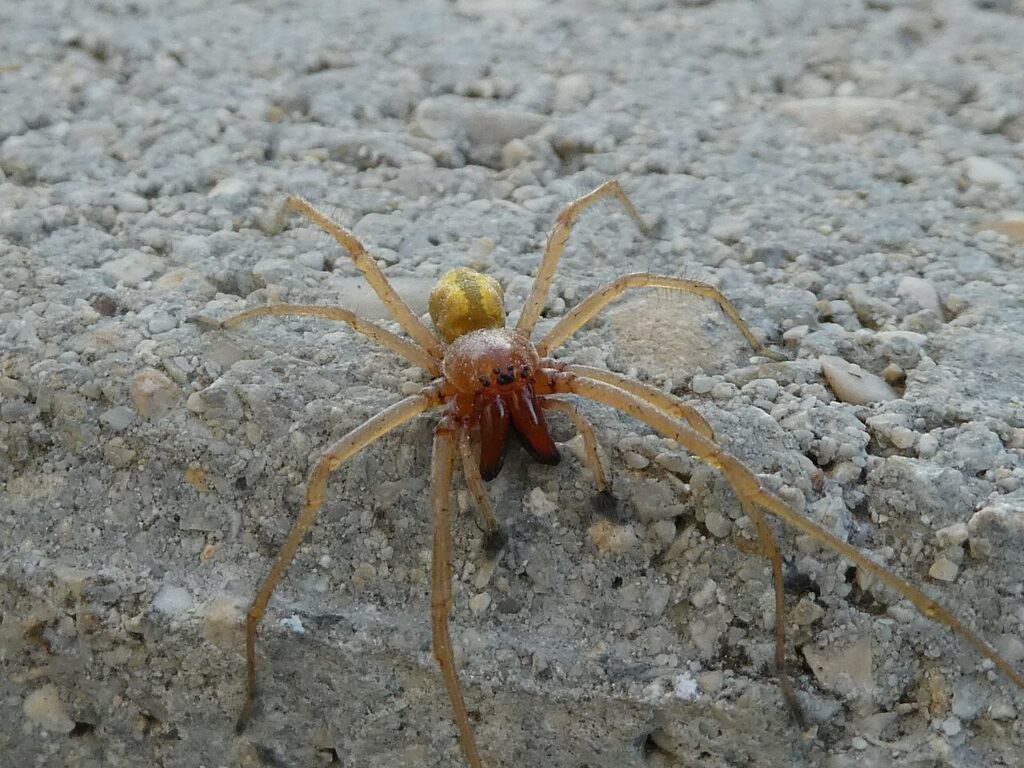
Appearance
The yellow sac spider (Cheiracanthium mildei), also known as the yellow house spider, typically measures between 1/4 to 1/2 inch in length. Its body is light yellow or tan, featuring long, slender legs that can appear even more elongated due to their distinctive double claws. The front legs are notably longer, often twice the length of the other legs. One fascinating trait of the yellow sac spider is its reflective eyes, which suggest excellent vision.
Habitat and Behavior
Yellow sac spiders are primarily outdoor dwellers but often find their way indoors. They are agile hunters, preying on insects, and prefer to construct small silk sacs in which they rest, hence their name. These sacs provide shelter and a place to lay eggs. Yellow sac spiders are often mistaken for brown recluse spiders, but they are less dangerous.
Yellow Sac Spider Venom and Bites
While the yellow sac spider possesses venom that can be harmful, it is important to note that it is not lethal to humans. Their bites are more likely to occur than those from more notorious spiders, such as the black widow or brown recluse. If bitten, symptoms may include localized pain, redness, and swelling, similar to a bee sting. Prompt treatment and monitoring are recommended to prevent infection.
Biology and Habits
Yellow sac spiders, like other arachnids, have a unique body structure with two main regions and eight legs. After mating, the female lays her eggs in silk sacs, and the spiderlings emerge after molting. Many species, including the yellow sac spider, exhibit a behavior known as “ballooning,” allowing them to travel long distances by releasing silk strands into the wind.
Yellow Sac Spider Control and Prevention
To prevent yellow sac spiders from invading your home, consider implementing the following strategies:
- Maintain Cleanliness: Regularly vacuum and dust your home to eliminate potential hiding spots and food sources.
- Seal Entry Points: Inspect and seal cracks around windows, doors, and foundations to reduce entry.
- Outdoor Maintenance: Trim back vegetation and remove debris from your yard, as these can attract spiders.
- Consider Preventive Treatments: For a proactive approach, consult with a pest control professional about integrated pest management plans that can help keep spiders outside where they belong.
For more detailed information on yellow sac spiders, including effective control options, check out this fact sheet.
By taking these steps, you can significantly reduce the chances of encountering yellow sac spiders indoors while allowing them to continue their beneficial role in controlling insect populations outdoors.
Protect your home from Yellow Sac Spiders! Contact us today for effective pest control solutions to keep your space spider-free.
